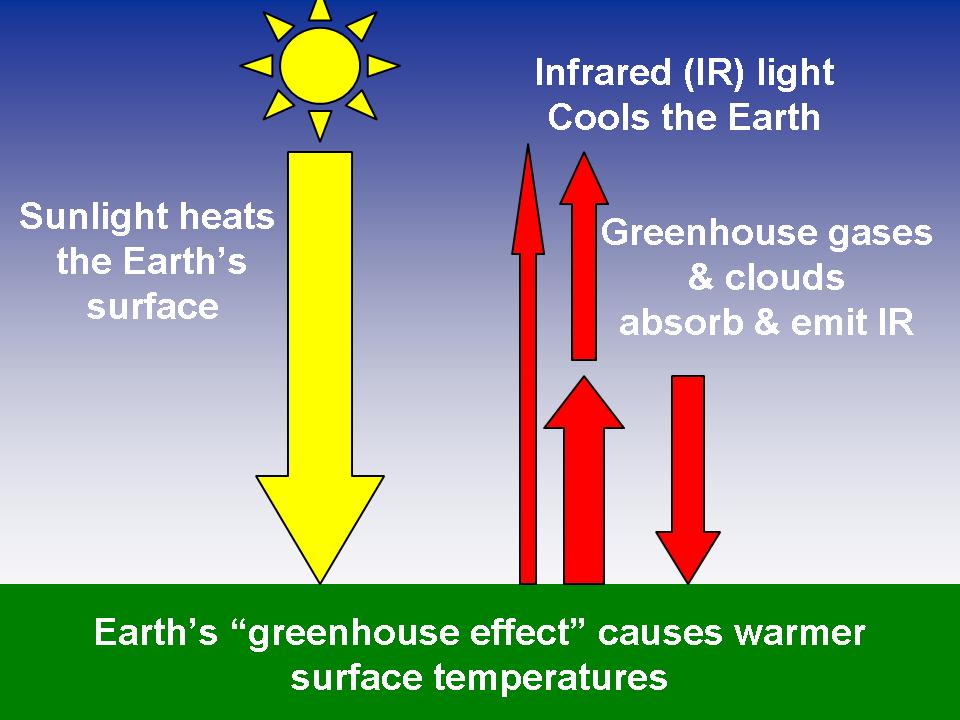The Earth's atmosphere and clouds absorb and emit infrared (IR) radiation (sometimes called "heat" radiation).
This is the source of the Earth's so-called "greenhouse effect", which both makes the Earth's surface warmer than it would
otherwise be, and also allows the atmosphere to cool to outer space. The main greenhouse gases are water vapor, carbon dioxide, and methane.
Here we look as some of the everyday consequences of the greenhouse effect in action.
Weather Requires the Greenhouse Effect
Most people don't realize that without the greenhouse effect, we would not have weather in any recognizable form. Without greenhouse gases, the atmosphere
would not be able to cool in response to heating from the solar-heated surface below. The atmosphere would warm to a
vertically-uniform temperature, which would inhibit vertical air currents, which are ultimately what drive most of what we
perceive as "weather" (clouds, precipitation, wind, etc.) In the real atmosphere, the different layers absorb and emit
IR radiation which causes a destabilization of the atmosphere, with strong warming of the lower atmosphere,
and strong cooling of the upper atmosphere. This drives vertical air currents, which in turn causes weather.
Nighttime Cooling
Without the atmosphere emitting large amounts of IR radiation downward toward the surface, nighttime temperatures would be
much cooler than we observe. For example, in deserts where there is little water vapor in the atmosphere (Earth's main greenhouse gas)
nights can become very cold.
Cloud Effects at Night
Most people have experienced the warming effects of clouds at night, that is, cloudy nights tend to be warmer than clear nights. This
is because the intensity of IR radiation emitted downward by clouds is greater than that of the clear atmosphere. The most dramatic example is
a cold winter night when clear skies give way to increasing clouds. The resulting warming can cause a temperature increase of 10 or 20 deg. F.
A backyard greenhouse effect experiment.
Why Bill Nye's and Al Gore's "greenhouse effect in a jar" experiment cannot work.
|



